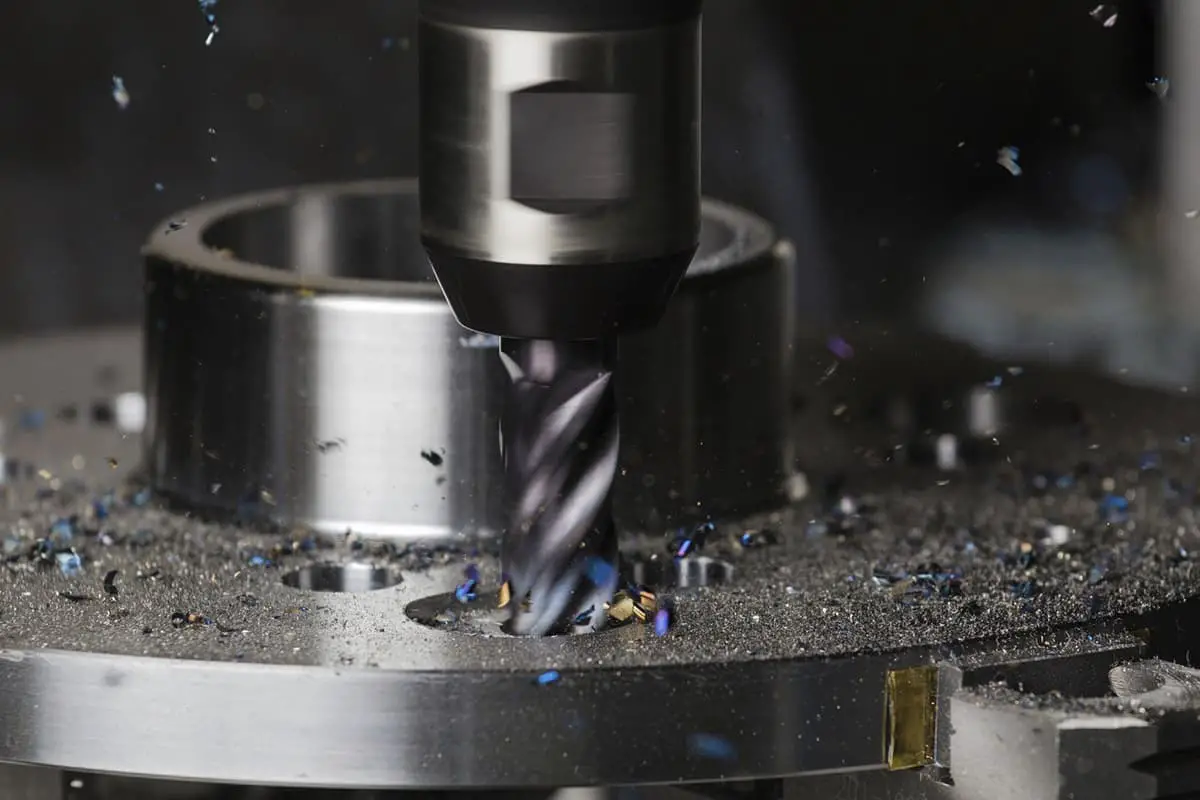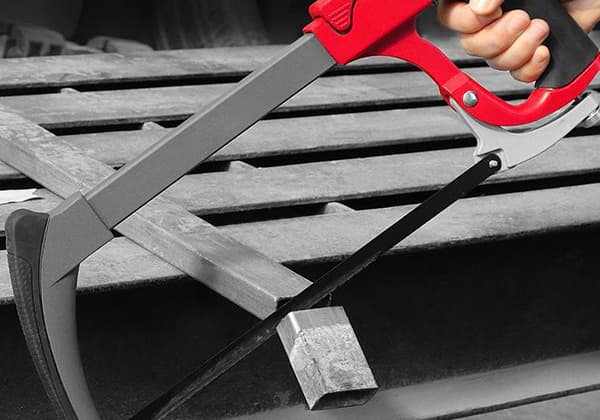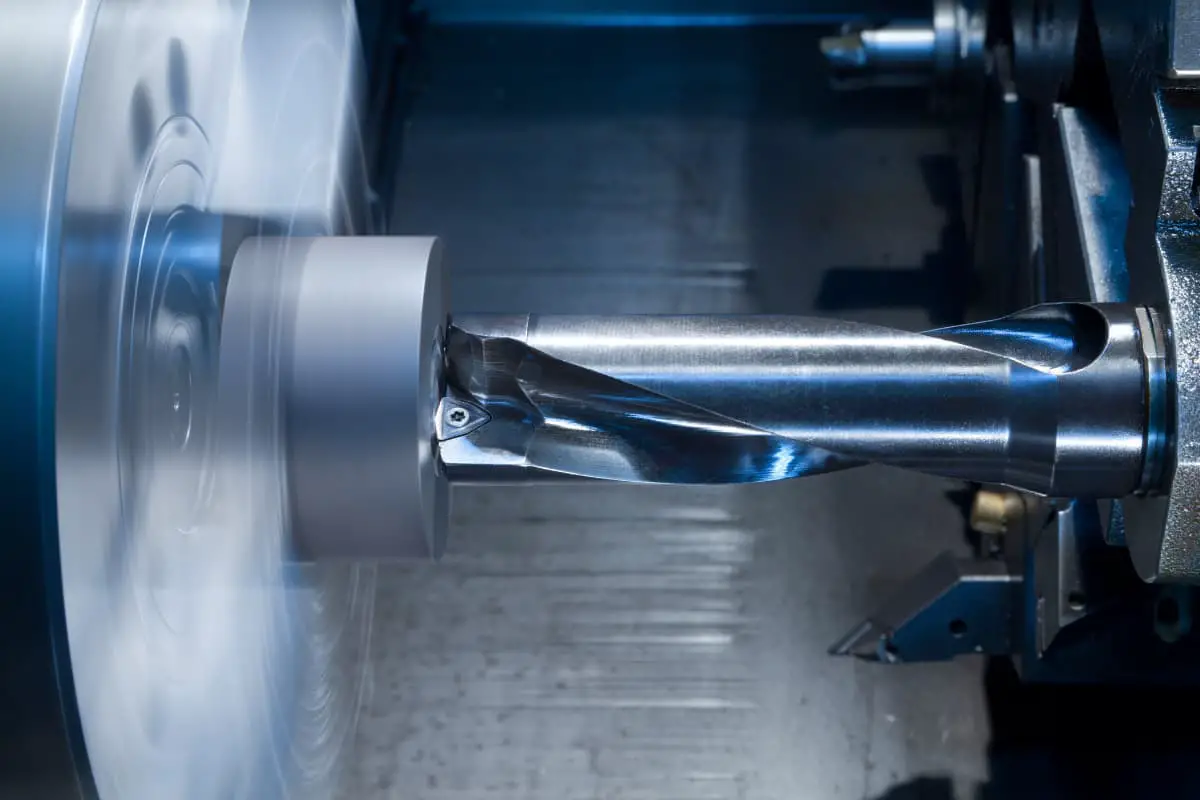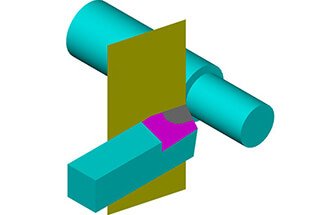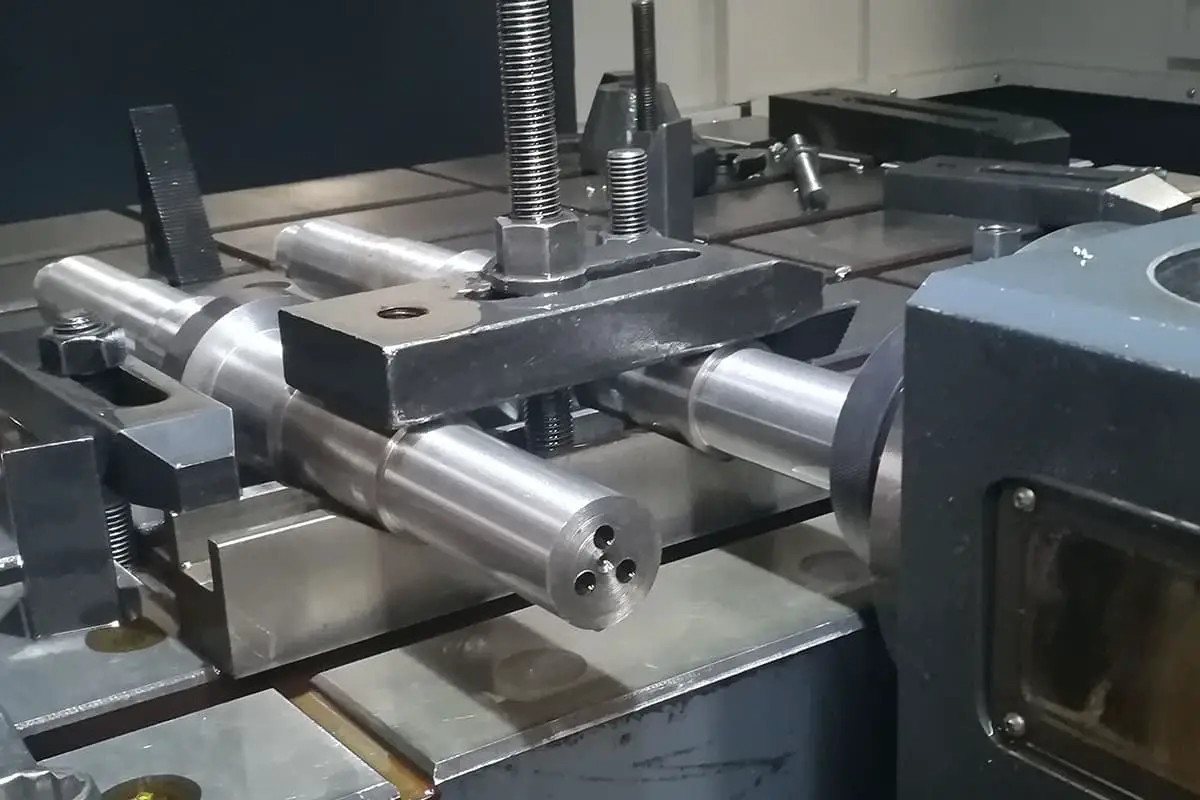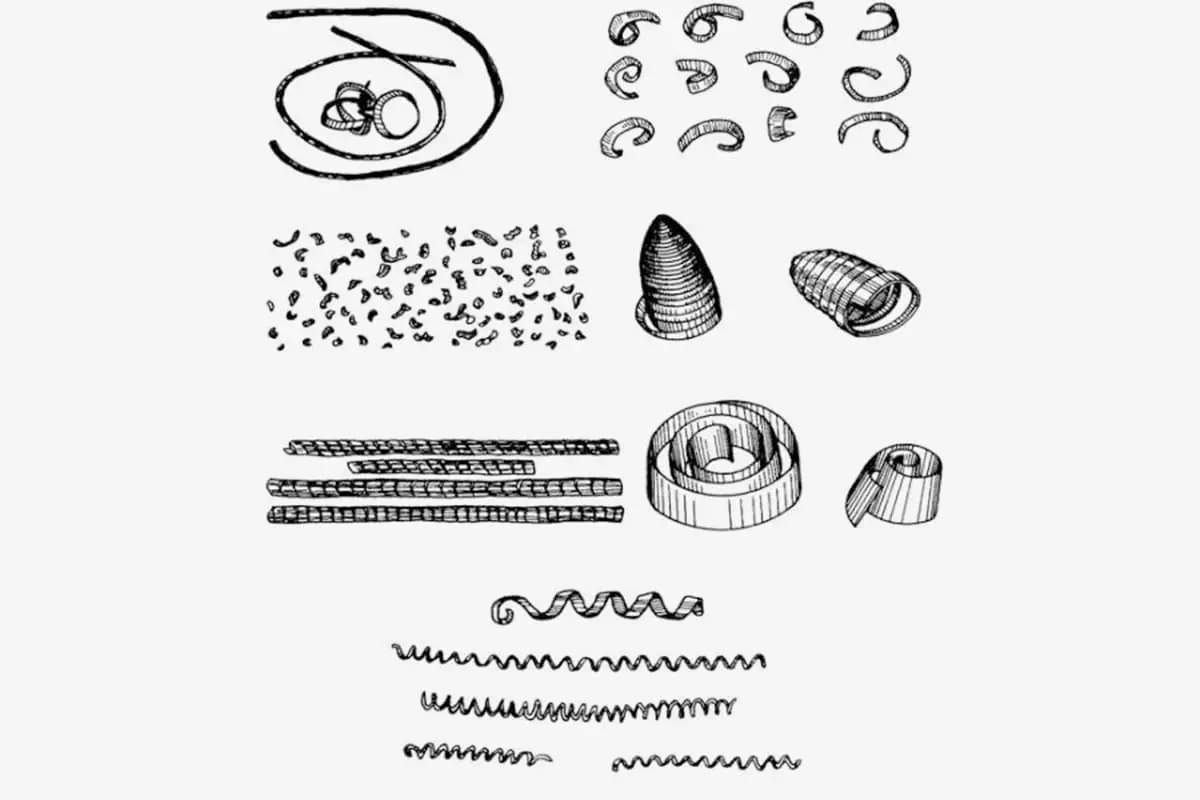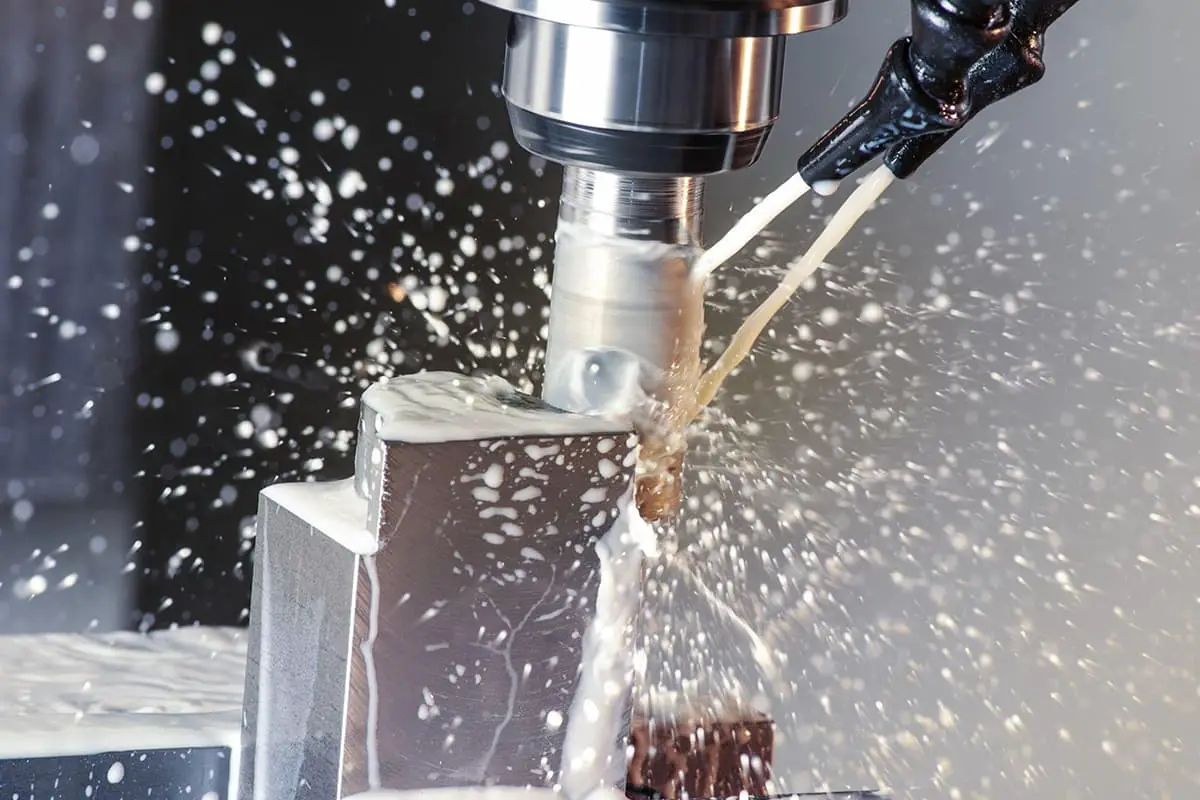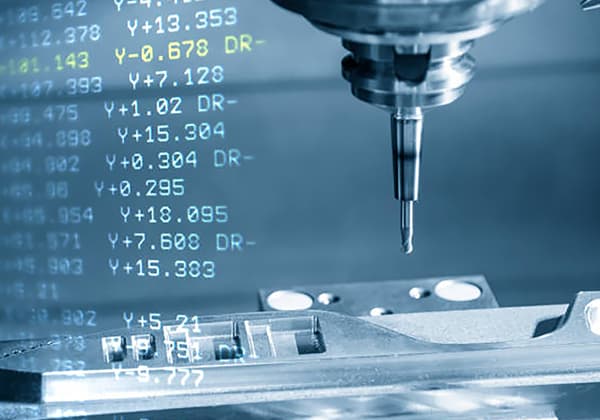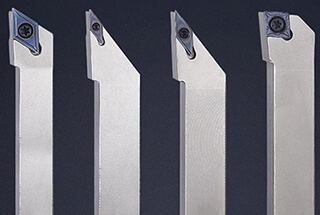
Ever wondered why your machining tools wear out so quickly? This article dives into the essential properties and types of cutting tool materials, explaining how advances in hardness, toughness, and heat resistance can enhance tool life and machining efficiency. Discover the characteristics and applications of diamond, cubic boron nitride, ceramic, coated, carbide, and high-speed steel tools. By the end, you’ll understand how choosing the right material can significantly impact your machining operations.
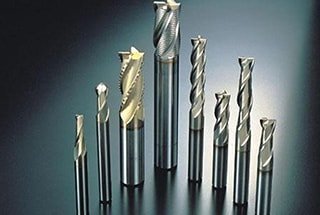
Advanced processing equipment and high-performance CNC tools can fully utilize their due performance and achieve good economic benefits.
With the rapid development of tool materials, the physical, mechanical properties, and cutting performance of various new tool materials have been greatly improved, and the application range has been continuously expanding.

The choice of cutting tool materials has a great impact on tool life, machining efficiency, machining quality, and machining costs. The tool must withstand high pressure, high temperature, friction, shock, and vibration when cutting. Therefore, the cutting tool material should have the following basic properties:
(1) Hardness and wear resistance.
The hardness of the cutting tool material must be higher than the hardness of the workpiece material, generally required to be above 60HRC.
The higher the hardness of the tool material, the better the wear resistance.
(2) Strength and toughness.
Cutting tool materials should have high strength and toughness to withstand cutting forces, shocks, and vibrations, and prevent brittle fracture and chipping of the tool.
(3) Heat resistance.
The cutting tool material should have good heat resistance, can withstand high cutting temperatures, and have good oxidation resistance.
(4) Process performance and economy.
The tool material should have good forging performance, heat treatment performance, welding performance, grinding performance, etc., and pursue a high performance-to-price ratio.
Diamond is an isomer of carbon, the hardest material ever found in nature.
Diamond cutting tools have high hardness, high wear resistance and high thermal conductivity, and are widely used in the processing of non-ferrous metals and non-metallic materials.
Related reading: Ferrous vs Non-ferrous Metals
Especially in high-speed machining of aluminum and silicon-aluminum alloys, diamond tools are the main types of cutting tools that are difficult to replace. Diamond tools can achieve high efficiency, high stability, and long life, and they are indispensable in modern CNC machining processes.
Type of diamond cutter
Natural diamond cutter
Natural diamonds have been used as cutting tools for hundreds of years. The natural single crystal diamond tool is finely ground, and the edge can be sharpened sharply with a cutting edge radius of 0.002 μm. Ultra-thin cutting enables extremely high workpiece accuracy and very low surface roughness. It is a recognized, ideal, and irreplaceable ultra-precision machining tool.
PCD diamond cutter
Natural diamonds are expensive. The diamond widely used in cutting machining is polycrystalline diamond (PCD). Since the early 1970s, polycrystalline diamond (PCD blade) has been successfully developed, and natural diamond tools are replaced by synthetic polycrystalline diamond.
PCD raw materials are abundant, and the price is only a few tenths to one-tenth of that of natural diamond. PCD tools cannot produce extremely sharp edges, and the surface quality of the machined workpiece is not as good as natural diamond.
Currently, it is not easy to manufacture PCD inserts with chipbreakers in the industry. Therefore, PCD can only be used for fine cutting of non-ferrous metals and non-metals, and it is difficult to achieve ultra-precision mirror cutting.
CVD diamond cutter
Since the late 1970s to the early 1980s, CVD diamond technology appeared in Japan. CVD diamond refers to the synthesis of a diamond film on a heterogeneous substrate (such as cemented carbide, ceramics, etc.) by chemical vapor deposition (CVD). CVD diamond has exactly the same structure and properties as natural diamond.
The performance of CVD diamond is very close to that of natural diamond, and it has the advantages of natural single crystal diamond and polycrystalline diamond (PCD), and to some extent, overcomes their shortcomings.
Diamond cutting tool performance characteristics
Extremely high hardness and wear resistance
Natural diamond is the hardest substance found in nature. Diamond has very high wear resistance. When machining high hardness materials, the life of diamond tools is 10 to 100 times, or even hundreds of times, that of cemented carbide tools.
Has a very low coefficient of friction
The coefficient of friction between diamond and some non-ferrous metals is lower than that of other tools. The low friction coefficient results in smaller deformation during processing and a reduced cutting force.
Cutting edge is very sharp
The cutting edge of the diamond tool can be sharpened. Natural single crystal diamond tools can achieve an edge sharpness as high as 0.002~0.008 μm for ultra-thin cutting and ultra-precision machining.
High thermal conductivity
The thermal conductivity and thermal diffusivity of diamond are high. This allows the cutting heat to be easily dissipated, resulting in a lower cutting temperature of the tool.
Has a lower coefficient of thermal expansion
Diamond has a coefficient of thermal expansion that is several times smaller than that of cemented carbide. The small change in tool size caused by the heat of cutting is especially important for precision and ultra-precision machining, where dimensional accuracy is critical.
Diamond tool application
Diamond tools are primarily used for fine cutting and boring of non-ferrous and non-metallic materials at high speeds. They are suitable for processing various wear-resistant non-metal materials, such as FRP powder metallurgy blanks, ceramic materials, etc., as well as various wear-resistant non-ferrous metals, such as various silicon-aluminum alloys and non-ferrous metal finishing.
However, the disadvantage of diamond tools is their poor thermal stability. When the cutting temperature exceeds 700°C to 800°C, the hardness of the diamond is completely lost. Additionally, diamond tools are not suitable for cutting ferrous metals, as diamond (carbon) can easily interact with iron atoms at high temperatures, converting carbon atoms into graphite structures, which can make the tool extremely fragile.
The second superhard material, cubic boron nitride (CBN), synthesized by a method similar to the diamond manufacturing method, is second only to diamond in terms of hardness and thermal conductivity.
It has excellent thermal stability and does not oxidize when heated to 10,000℃ in an atmosphere.
CBN has extremely stable chemical properties for ferrous metals and can be widely used in the processing of steel products.
Type of cubic boron nitride tool
Cubic boron nitride (CBN) is a substance that does not exist in nature.
There are two types: single crystal and polycrystalline, namely CBN single crystal and polycrystalline cubic boron nitride (PCBN).
CBN is one of the isomers of boron nitride (BN) and has a structure similar to that of diamond.
PCBN (polycrystalline cubic boron nitride) is a polycrystalline material in which fine CBN materials are sintered together through a bonding phase (TiC, TiN, Al, Ti, etc.) under high temperature and high pressure.
It is currently a tool material that uses artificially synthesized hardness next to diamond.
It is collectively referred to as a superhard tool material.
PCBN is mainly used to make tools.
PCBN tools can be divided into integral PCBN inserts and PCBN composite inserts sintered with cemented carbide.
The PCBN composite blade is formed by sintering a layer of 0.5~1.0 mm thick PCBN on cemented carbide with good strength and toughness.
Its properties combine good toughness, high hardness, and wear resistance.
It solves the problems of low bending strength and difficult welding of CBN inserts.
Main properties and characteristics of cubic boron nitride
Although the hardness of cubic boron nitride is slightly lower than that of diamond, it is much higher than other high hardness materials.
The outstanding advantage of CBN is that its thermal stability is much higher than that of diamond, up to 1200 °C (compared to diamond’s 700-800 °C).
Another outstanding advantage is that it is chemically inert and does not react chemically with iron at 1200-1300 °C.
The main performance characteristics of cubic boron nitride are as follows:
High hardness and wear resistance
The CBN crystal structure is similar to diamond and has comparable hardness and strength.
PCBN is particularly suitable for processing high-hardness materials that can only be ground previously, and it can achieve a superior surface quality of the workpiece.
High thermal stability
The heat resistance of CBN can reach 1400 to 1500℃, which is almost twice as high as the heat resistance of diamond (700 to 800℃).
PCBN tools can cut superalloys and hardened steels at speeds 3 to 5 times faster than carbide tools.
Excellent chemical stability
It does not play a chemical role with iron-based materials up to 1200-1300℃.
It does not wear as sharply as diamond, yet it still maintains the hardness of the cemented carbide.
PCBN tools are suitable for cutting hardened steel parts and chilled cast iron, and can be widely used for high-speed cutting of cast iron.
Has good thermal conductivity
Although the thermal conductivity of CBN cannot keep up with diamond, the thermal conductivity of PCBN in various tool materials is second only to diamond, which is much higher than that of high-speed steel and hard alloy.
Has a lower coefficient of friction
A low coefficient of friction results in reduced cutting forces during cutting, reduced cutting temperatures, and improved surface quality.
Cubic boron nitride tool application
Cubic boron nitride is suitable for finishing difficult-to-cut materials such as hardened steel, hard cast iron, superalloy, hard alloy, and surface spray materials.
The processing accuracy can reach IT5 (hole is IT6), and the surface roughness value can be as small as Ra 1.25 to 0.20 μm.
The cubic boron nitride tool material has poor toughness and bending strength. Therefore, cubic boron nitride turning tools are not suitable for rough machining with low speed and large impact load. Additionally, they are not suitable for cutting plastic materials (such as aluminum alloy, copper alloy, nickel-based alloy, steel with large plasticity, etc.) because cutting these metals can cause a serious built-up edge, which can deteriorate the machined surface.
Ceramic knives have the characteristics of high hardness, good wear resistance, excellent heat resistance, and chemical stability, and they are not easy to bond with metals.
Ceramic tools play an important role in CNC machining and have become one of the main tools for high-speed cutting and difficult-to-machine materials.
Ceramic tools are widely used for high-speed cutting, dry cutting, hard cutting, and machining of difficult-to-machine materials.
Ceramic knives can efficiently process high-hardness materials that traditional knives cannot process at all and achieve “milling replace grinding.”
The optimum cutting speed of ceramic tools can be 2 to 10 times higher than that of cemented carbide tools, greatly improving cutting production efficiency.
The main raw material used in ceramic tool materials is the most abundant element in the earth’s crust. Therefore, the promotion and application of ceramic tools is of great significance for improving productivity, reducing processing costs, and saving strategic precious metals. This will greatly promote the advancement of cutting technology.
Types of ceramic tool materials
The types of ceramic tool materials can be generally divided into three categories: alumina-based ceramics, silicon nitride-based ceramics, and composite silicon nitride-alumina-based ceramics.
Among them, alumina-based and silicon nitride-based ceramic tool materials are the most widely used.
Silicon nitride-based ceramics are superior to alumina-based ceramics.
Ceramic tool performance, characteristics
High hardness and good wear resistance
Although the hardness of ceramic tools is not as high as PCD and PCBN, it is much higher than that of hard alloys and high-speed steel tools, reaching 93-95 HRA.
Ceramic tools can process high-hardness materials that are difficult to machine with traditional tools and are suitable for high-speed cutting and hard cutting.
High temperature resistance and heat resistance
Ceramic tools can still cut at temperatures above 1200°C.
Ceramic tools have good high-temperature mechanical properties.
The Al2O3 ceramic tool has excellent oxidation resistance, and the cutting edge can be used continuously even in a red-hot state.
Therefore, ceramic tools can achieve dry cutting, eliminating the need for cutting fluid.
Good chemical stability
Ceramic knives are not easy to bond with metal, and have good corrosion resistance and chemical stability, which can reduce the bonding wear of the tool.
Low friction coefficient
Ceramic knives have a low affinity with metals and a low coefficient of friction, which reduces cutting forces and cutting temperatures.
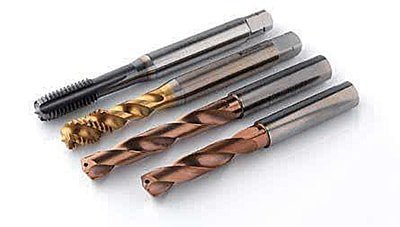
Ceramic tool application
Ceramics are one of the tool materials primarily used for high-speed finishing and semi-finishing.
Ceramic cutters are suitable for cutting all kinds of cast iron (grey cast iron, ductile iron, malleable cast iron, chilled cast iron, high alloy wear-resistant cast iron) and steel (carbon structural steel, alloy structural steel, high strength steel, high manganese steel, hardened steel, etc.). They can also be used to cut copper alloys, graphite, engineering plastics, and composites.
The performance of ceramic tool materials has low bending strength and poor impact toughness, and they are not suitable for cutting under low speed and impact load.
Coating the tool is one of the important ways to improve tool performance.
The emergence of coated tools has made a major breakthrough in tool cutting performance.
A coated tool is coated with one or more layers of a refractory compound with good wear resistance on a tougher tool body. This combines the tool base with a hard coating to maximize tool performance.
Coated tools can increase machining efficiency, increase machining accuracy, extend tool life, and reduce machining costs.
About 80% of the cutting tools used in new CNC machine tools use coated tools.
Coated tools will be the most important tool in the field of CNC machining in the future.
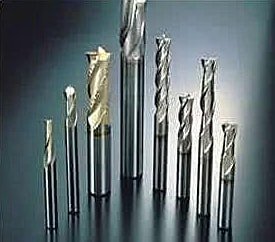
Type of coated tool
According to the coating method:
Coated tools can be divided into chemical vapor deposition (CVD) coated tools and physical vapor deposition (PVD) coated tools.
Coated cemented carbide tools are generally coated using the chemical vapor deposition method with a deposition temperature of around 1000°C.
Coated high-speed steel tools generally adopt the physical vapor deposition method, and the deposition temperature is about 500°C.
According to the difference of the coating tool base material:
Coated tools can be divided into coated carbide tools, coated high-speed steel tools, and coated tools on ceramic and superhard materials (diamond and cubic boron nitride).
According to the nature of the coating material:
Coated tools can be divided into two broad categories, namely “hard” coated tools and “soft” coated tools.
The main goal pursued by “hard” coated tools is high hardness and wear resistance. Their main advantages are high hardness and good wear resistance, typically TiC and TiN coatings.
The goal of “soft” coated tools is a low coefficient of friction, also known as self-lubricating tools. Their friction coefficient with the workpiece material is very low, only about 0.1, which can reduce bonding, friction, cutting force, and cutting temperature.
Nanoeoating tools have recently been developed.
This coated tool can be used in different combinations of coating materials (such as metal/metal, metal/ceramic, ceramic/ceramic, etc.) to meet different functional and performance requirements.
The well-designed nano-coating allows the tool material to have excellent anti-friction and anti-wear properties, making it suitable for high-speed dry cutting.
Coating tool features
Good mechanics and cutting performance
The coated tool combines the excellent properties of the base material and the coating material to maintain the good toughness and high strength of the substrate, as well as the high hardness, high wear resistance, and low friction coefficient of the coating.
As a result, coated tools can cut more than twice as fast as uncoated tools and allow for higher feed rates.
The life of coated tools is also improved.
Strong versatility
Coated tools have a wide range of versatility and a wide range of processing, and a coated tool can be used in place of several non-coated tools.
Coating thickness
Tool life increases as the thickness of the coating increases.
However, when the coating thickness is saturated, the tool life is no longer significantly increased.
When the coating is too thick, it is easy to cause peeling, and when the coating is too thin, the abrasion resistance is poor.
Regrind
The coated blade has poor regrind, complicated coating equipment, high process requirements and long coating time.
Coating material
Cutting tools with different coating materials have different cutting performance.
For example, TiC coatings have an advantage when cutting at low speeds, and TiN is suitable for high-speed cutting.
Application of coated tools
Coated tools have great potential in the field of CNC machining and will be the most important tool in the field of CNC machining in the future.
Coating technology has been applied to end mills, reamers, drill bits, composite hole machining tools, gear hobs, pinion cutters, shaving cutters, forming broaches, and various machine insert indexable inserts.
It meets the needs of high-speed machining of various steels and cast iron, heat-resistant alloys, and non-ferrous metals.
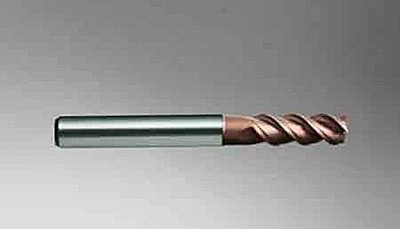
Carbide tools, especially indexable carbide tools, are the leading products for CNC machining tools.
Since the 1980s, various types of integral and indexable carbide tools or inserts have been extended to various cutting tool fields.
Among them, indexable carbide tools have been expanded from simple turning tools and face milling cutters to various precision, complex, and forming tools.
Type of cemented carbide tool
According to the main chemical composition, cemented carbide can be divided into tungsten carbide-based hard alloy and carbon (titanium nitride) (TiC(N))-based hard alloy.
Tungsten carbide-based cemented carbides include tungsten cobalt (YG), tungsten cobalt titanium (YT), and rare carbides (YW), each of which has advantages and disadvantages.
The main components are tungsten carbide (WC), titanium carbide (TiC), tantalum carbide (TaC), niobium carbide (NbC), etc., and the commonly used metal bonding phase is Co.
The carbon (nitrogen) titanium-based cemented carbide is a hard alloy containing TiC as the main component (some of which are added with other carbides or nitrides), and the commonly used metal bonding phases are Mo and Ni.
The International Organization for Standardization (ISO) classifies cutting carbides into three categories:
Class K, including K10 to K40, is equivalent to China’s YG class (the main component is WC.Co).
Class P, including P01 to P50, is equivalent to YT in China (the main component is WC.TiC.Co).
Class M, including M10 to M40, is equivalent to YW in China (the main component is WC-TiC-TaC(NbC)-Co).
Each grade represents a series of alloys from high hardness to maximum toughness, with numbers between 01 and 50, respectively.
Performance characteristics of cemented carbide tools
High hardness
Carbide tools are made by powder metallurgy from carbides with high hardness and melting points (called hard phase) and metal binders (called bonded phases).
Their hardness is 89-93 HRA, much higher than high-speed steel.
At 540°C, the hardness still reaches 82-87 HRA.
At room temperature, the hardness value is the same as that of high-speed steel (83~86 HRA).
The hardness value of cemented carbide varies with the nature, quantity, particle size, and content of the metal bonded phase of the carbide, and generally decreases as the content of the bonded metal phase increases.
When the content of the binder phase is the same, the hardness of the YT alloy is higher than that of the YG alloy.
The alloy to which TaC (NbC) is added has a high-temperature hardness.
Bending strength and toughness
The bending strength of commonly used cemented carbides is in the range of 900~1500 MPa.
The higher the content of the metal bond phase, the higher the bending strength.
When the content of the binder is the same, the strength of the YG-based (WC-Co) alloy is higher than that of the YT-based (WC-TiC-Co) alloy, and the strength decreases as the TiC content increases.
Cemented carbide is a brittle material, and its impact toughness is only 1/30~1/8 of high-speed steel at room temperature.
Applications of commonly used carbide tools
YG alloys are mainly used to process cast iron, non-ferrous metals, and non-metallic materials.
Fine-grained hard alloys (such as YG3X, YG6X) have higher hardness and wear resistance than medium-grained alloys when the cobalt content is the same. They are suitable for processing some special hard cast iron, austenitic stainless steel, heat-resistant alloys, titanium alloys, hard bronze, and wear-resistant insulation materials.
The outstanding advantages of YT-type cemented carbides are high hardness, good heat resistance, high hardness and compressive strength at high temperatures, higher resistance to YG, and better oxidation resistance.
Therefore, when the tool requires high heat resistance and wear resistance, a grade with a high TiC content should be selected.
YT alloys are suitable for processing steel materials but are not suitable for processing titanium alloys and silicon aluminum alloys.
YW alloys have the properties of YG and YT alloys and have good comprehensive properties. They can be used for processing steel materials as well as for processing cast iron and non-ferrous metals.
Such alloys, if the cobalt content is properly added, can be used at high strength and for roughing and interrupted cutting of various difficult-to-machine materials.
High-Speed Steel (HSS) is a high-alloy tool steel with more alloying elements such as W, Mo, Cr, and V.
High-speed steel cutters have excellent comprehensive properties in terms of strength, toughness, and workmanship.
In complex tools, especially for the production of hole-cutting tools, milling cutters, thread cutters, broaches, cutting tools, and other blade-shaped complex tools, high-speed steel still dominates.
High-speed steel tools are easy to grind sharp cutting edges.
High-speed steel can be classified into general-purpose high-speed steel and high-performance high-speed steel, depending on the application.

Universal high speed steel cutter
General-purpose high-speed steel can be divided into two types: tungsten steel and tungsten-molybdenum steel.
This type of high-speed steel contains 0.7% to 0.9% of carbon (C).
According to the amount of tungsten contained in the steel, it can be divided into tungsten steel with 12% or 18% of tungsten.
A tungsten-molybdenum steel containing 6% or 8% of tungsten, and a molybdenum steel containing 2% of tungsten or none.
General-purpose high-speed steel has a certain hardness (63-66 HRC) and wear resistance, high strength and toughness, good plasticity, and processing technology.
Therefore, it is widely used in the manufacture of various complex tools.
Tungsten steel
The general grade of tungsten steel for high-speed steel is W18Cr4V (referred to as W18), which has good comprehensive performance. The high-temperature hardness is 48.5HRC at 600 °C and can be used to manufacture a variety of complex tools. It has the advantages of good grindability and low decarburization sensitivity. However, due to the high carbide content, the distribution is less uniform, the particles are larger, and the strength and toughness are not high.
Tungsten carbide steel
It refers to a high-speed steel obtained by replacing a part of tungsten in tungsten steel with molybdenum.
The typical grade of tungsten-molybdenum steel is W6Mo5Cr4V2 (referred to as M2).
The carbide particles of M2 are fine and uniform, and the strength, toughness, and high-temperature plasticity are better than W18Cr4V.
Another type of tungsten-molybdenum steel is W9Mo3Cr4V (referred to as W9). Its thermal stability is slightly higher than that of M2 steel, and its flexural strength and toughness are better than W6Mo5Cr4V2, and it has good machinability.
High performance high speed steel cutter
High-performance high-speed steel refers to a new steel grade that adds some carbon content, vanadium content, and alloying elements such as Co and Al to the general-purpose high-speed steel component, thereby improving its heat resistance and wear resistance.
There are mainly the following major categories:
High carbon high speed steel
High-carbon high-speed steel (such as 95W18Cr4V), high hardness at room temperature and high temperature, suitable for the manufacture of ordinary steel and cast iron, drill bits with high wear resistance, reamer, tap and milling cutter, or tools for processing hard materials. Not suitable for large impacts.
High vanadium high speed steel
Typical grades, such as W12Cr4V4Mo, (EV4 for short), increase V to 3% to 5%.
It has good wear resistance and is suitable for cutting materials with great wear on the tool, such as fiber, hard rubber, plastic, etc. It can also be used to process stainless steel, high strength steel and high temperature alloy.
Cobalt high speed steel
It is a super high-speed steel containing cobalt, with a typical grade such as W2Mo9Cr4VCo8 (referred to as M42).
It has a high hardness of 69-70 HRC and is suitable for processing difficult-to-machine materials, such as high-strength heat-resistant steel, high-temperature alloy, and titanium alloy.
M42 is highly grindable and suitable for making complex tools, but it is not suitable for working under impact cutting conditions.
Aluminum high speed steel
It is a kind of aluminum super hard high speed steel, typical grade, such as W6Mo5Cr4V2Al, (abbreviation 501).
The high temperature hardness at 6000C also reaches 54HRC, and the cutting performance is equivalent to M42.
Suitable for the manufacture of milling cutters, drills, reamers, gear cutters, broaches, etc., for processing alloy steel, stainless steel, high-strength steel and high-temperature alloys.
Nitrogen super hard high speed steel
Typical grades, such as W12M03Cr4V3N, referred to as (V3N), are nitrogen-containing superhard high-speed steel.
Hardness, strength and toughness are comparable to those of M42.
It can be used as a substitute for cobalt-containing high-speed steel for low-speed cutting of difficult-to-machine materials and low-speed high-precision machining.
Smelting high speed steel and powder metallurgy high speed steel
According to different manufacturing processes, high speed steel can be divided into smelting high speed steel and powder metallurgy high speed steel.
Smelting high speed steel
Both ordinary high-speed steel and high-performance high-speed steel are manufactured using a melting method.
They are made into tools through processes such as smelting, ingot casting, and rolling.
A serious problem that is likely to occur in smelting high-speed steel is carbide segregation. Hard and brittle carbides are unevenly distributed in high-speed steel and have coarse grains (up to several tens of microns), which adversely affects the wear resistance, toughness, and cutting performance of high-speed steel tools.
Powder metallurgy high speed steel (PM HSS)
Powder metallurgy high-speed steel (PM HSS) is molten steel smelted from a high-frequency induction furnace and atomized by high-pressure argon or pure nitrogen. It is then quenched to obtain a fine and uniform crystal structure (high-speed steel powder). The obtained powder is then pressed into a blade blank under high temperature and high pressure, or first formed into a steel slab and then forged and rolled into a tool shape.
Compared with high-speed steel produced by the melt method, PM HSS has the advantages of fine and uniform carbide grains, as well as improved strength, toughness, and wear resistance.
In the field of complex CNC tools, PM HSS tools will play an increasingly important role. Typical grades include F15, FR71, GFl, GF2, GF3, PT1, PVN, etc.
It can be used to make large-sized, heavy-duty, impact-resistant tools, as well as precision tools.
Currently, widely used CNC tool materials include diamond tools, cubic boron nitride tools, ceramic tools, coated tools, carbide tools, and high-speed steel tools.
The total number of tool materials is large, and their performance varies greatly. The main performance indicators of the various tool materials are as follows:
| Types | Density g/cm2 | Heat-resistant ℃ | Hardness | Bending strength Mpa | Thermal conductivity w/(m.K) | Thermal expansion coefficient ×10-5/℃ | |
|---|---|---|---|---|---|---|---|
| Polycrystalline diamond | 3.47-3.56 | 700-800 | >9000HV | 600-1100 | 210 | 3.1 | |
| Polycrystalline cubic boron carbide | 3.44-3.49 | 1300-1500 | 4500HV | 500-800 | 130 | 4.7 | |
| Ceramic knife | 3.1-5.0 | >1200 | 91-95HRA | 700-1500 | 15.0-38.0 | 7.0-9.0 | |
| Cemented carbide | Tungsten cobalt | 14.0-15.5 | 800 | 89-91.5HRA | 1000-2350 | 74.5-87.9 | 3-7.5 |
| Tungsten cobalt titanium | 9.0-14.0 | 900 | 89-92.5HRA | 800-1800 | 20.9-62.8 | ||
| General alloy | 12.0-14.0 | 1000-1100 | ~92.5HRA | / | / | ||
| TiC based alloy | 5.0-7.0 | 1100 | 92-93.5HRA | 1150-1350 | / | 8.2 | |
| High speed steel | 8.0-8.8 | 600-700 | 62-70HRC | 2000-4500 | 15.0-30.0 | 8-12 | |
Cutting tool materials for CNC machining must be selected based on the workpiece being machined and the nature of the process.
The selection of cutting tool materials should be properly matched to the machined object. The matching of the cutting tool material with the processing object mainly refers to the matching of the mechanical properties, physical properties, and chemical properties of the two to obtain the longest tool life and the maximum cutting processing productivity.
The mechanical property matching problem between the cutting tool and the machined object mainly refers to mechanical property parameters such as the strength, toughness, and hardness of the tool and the workpiece material.
Tool materials with different mechanical properties are suitable for machining workpiece materials.
The hardness order of the tool material is as follows: diamond tool > cubic boron nitride tool > ceramic tool > hard alloy > high-speed steel.
The bending strength order of the tool material is as follows: high-speed steel > hard alloy > ceramic tool > diamond and cubic boron nitride tool.
The order of toughness of the tool material is as follows: high-speed steel > hard alloy > cubic boron nitride, diamond, and ceramic tools.
High-hardness workpiece materials must be machined with higher hardness tools. The hardness of the tool material must be higher than the hardness of the workpiece material, generally required to be above 60 HRC. The higher the hardness of the tool material, the better its wear resistance.
For example, when the amount of cobalt in the cemented carbide increases, the strength and toughness increase, the hardness decreases, and it is suitable for rough processing. When the amount of cobalt decreases, the hardness and wear resistance increase, which is suitable for finishing.
Tools with excellent high-temperature mechanical properties are especially suitable for high-speed machining. The excellent high-temperature performance of ceramic tools enables them to be cut at high speeds, allowing cutting speeds to be 2-10 times higher than cemented carbides.
Tools with different physical properties, such as high-speed steel tools with high thermal conductivity and low melting point, ceramic tools with high melting point and low thermal expansion, and diamond tools with high thermal conductivity and low thermal expansion, are suitable for processing workpiece materials.
When machining a workpiece with poor thermal conductivity, a tool material with better heat conductivity should be used to allow the cutting heat to be quickly transmitted to lower the cutting temperature.
Due to the high thermal conductivity and thermal diffusivity of diamond, the cutting heat is easily dissipated, and it does not cause large thermal deformation. This is especially important for precision machining tools with high dimensional accuracy.
Heat resistance temperature of various tool materials:
700~8000C for diamond tools, 13000~15000C for PCBN tools, 1100~12000C for ceramic tools, 900~11000C for TiC(N) based hard alloys, WC-based ultra-fine grain hard The quality of the alloy is 800 to 9000 C, and the HSS is 600 to 7000 C.
Thermal conductivity sequence of various tool materials:
PCD>PCBN>WC-based cemented carbide>TiC(N)-based cemented carbide>HSS>Si3N4-based ceramic>A1203-based ceramic.
The order of thermal expansion coefficient of various tool materials is:
HSS>WC-based cemented carbide>TiC(N)> A1203-based ceramic>PCBN>Si3N4-based ceramic>PCD.
The order of thermal shock resistance of various tool materials is:
HSS>WC based cemented carbide>Si3N4 based ceramic>PCBN>PCD>TiC(N) based cemented carbide>A1203 based ceramic.
The matching of the chemical properties of the cutting tool material with the processing object mainly refers to the matching of the chemical properties of the tool material with the chemical affinity, chemical reaction, diffusion, and dissolution of the workpiece material.
Tools with different materials are suitable for machining different workpiece materials.
The anti-bonding temperature of various tool materials (and steel) is:
PCBN>ceramic>hard alloy>HSS.
The oxidation temperature of various tool materials is:
ceramic>PCBN>hard alloy>diamond>HSS.
The diffusion strength of various tool materials (for steel) is:
diamond > Si3N4 based ceramic > PCBN > A1203 based ceramic.
The diffusion strength (for titanium) is:
A1203 based ceramic > PCBN > SiC > Si3N4 > diamond.
In general, PCBN, ceramic tools, coated carbide, and TiCN-based carbide tools are suitable for CNC machining of ferrous metals such as steel.
PCD tools are suitable for processing non-ferrous materials such as Al, Mg, Cu, alloys, and non-metal materials.
Table 2 lists some of the workpiece materials that are suitable for machining using the above tool materials.
| Cutting tool | High hardness steel | Heat resistant alloy | Titanium alloy | Nickel based superalloy | Cast iron | Pure steel | High silicon aluminum alloy | FRP composite material |
|---|---|---|---|---|---|---|---|---|
| PCD | × | × | ◎ | × | × | × | ◎ | ◎ |
| PCBN | ◎ | ◎ | ○ | ◎ | ◎ | ● | ● | |
| Ceramic knife | ◎ | ◎ | × | ◎ | ◎ | ● | × | × |
| Layer cemented carbide | ○ | ◎ | ◎ | ● | ◎ | ◎ | ● | ● |
| TiCN based hard alloy | ● | × | × | × | ◎ | ● | × | × |
Note:
◎ – Excellent
○ – Good
● – OK
× – Bad

